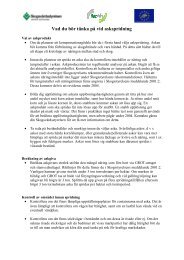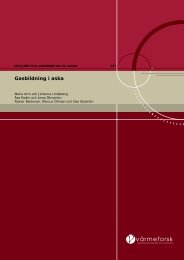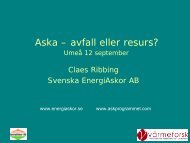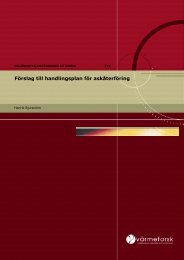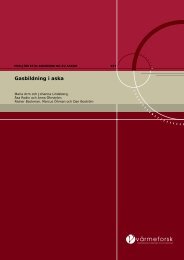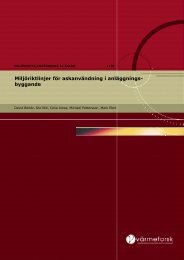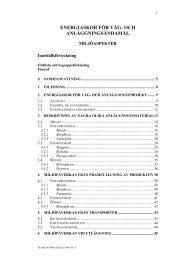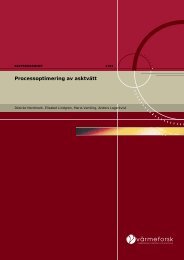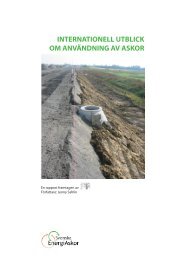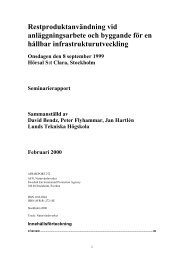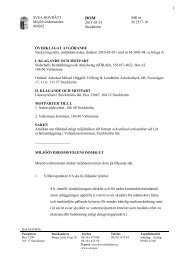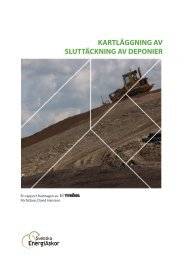Rapport 867.pdf - Svenska EnergiAskor AB
Rapport 867.pdf - Svenska EnergiAskor AB
Rapport 867.pdf - Svenska EnergiAskor AB
Create successful ePaper yourself
Turn your PDF publications into a flip-book with our unique Google optimized e-Paper software.
VÄRMEFORSK<br />
To enable the use of and encourage the acceptances of bottom ashes as a construction<br />
material it is important to show that the requirements above are fulfilled. The situation<br />
is complicated regarding the fact that fixed numerical values for functional<br />
requirements above are missing except for the frost heave and heat conductivity (if the<br />
construction is built according to ATB VÄG 2003 [7]. This means that new knowledge<br />
about bottom ashes for the other functional requirements have to be evaluated through a<br />
comparison with current the knowledge about the functional requirements in general<br />
(the appropriate level of the requirements for different applications). When it is possible<br />
the report suggests suitable levels for different functional requirements. What functional<br />
requirements that is valid for a certain application depends on the character of the<br />
application. The testing methods, which are needed to confirm the above functional<br />
requirements, are a combination of established methods (for traditional materials) and<br />
newer methods for the ashes.<br />
For ashes bearing capacity, stability, settling and compression should be tested with<br />
cyclic load triaxial test combined with some kind of more simple test, for example the<br />
compression test. Special attention should be payed to water absorption, since it is<br />
considerable for ashes and has been more or less neglected earlier. A correct<br />
measurement of the water absorption is important for testing of frost resistance (which<br />
should be performed with freeze-thaw-testing), frost heave and heat conductivity (to<br />
avoid slippery road surfaces). The frost heave can be tested with established methods if<br />
correct water content is achieved. The heat conductivity can be tested with the same<br />
method for ashes as for traditional materials considered a correct conditioning of the<br />
materials.<br />
The particle size distribution should be tested with careful variants of established<br />
methods, and that changes in particle size distribution should be checked when other<br />
testing is performed. A special crushing method (developed for light weight aggregate)<br />
to test resistance to mechanical action, can also be used to test ashes.<br />
Concerning compaction, established methods can presumably be used. The methods,<br />
that treat the materials in a careful manner, are recommended, i.e. standard proctor or<br />
vibro table. The measurement of permeability is not that dependent of the kind of<br />
materials that are going to be tested, i.e. some of the established methods can be used.<br />
Also for capillarity, established methods can be used. For porous materials as ashes, the<br />
result can however be a combination of absorption as a result of capillarity and<br />
absorption as a result of ordinary absorption in the particles.<br />
Organic content is an important parameter in the ashes since this has influence on the<br />
stability. A method which measures only organic material and is up-to-date should be<br />
used, for example SS-EN13137.<br />
The experience of bottom ashes within the field of civil construction in Sweden is<br />
limited. The relatively largest experience from technical point of view is about MSWIash<br />
(Municipal Solid Waste Incinerator) and also to some extent for coal bottom ash.<br />
x



